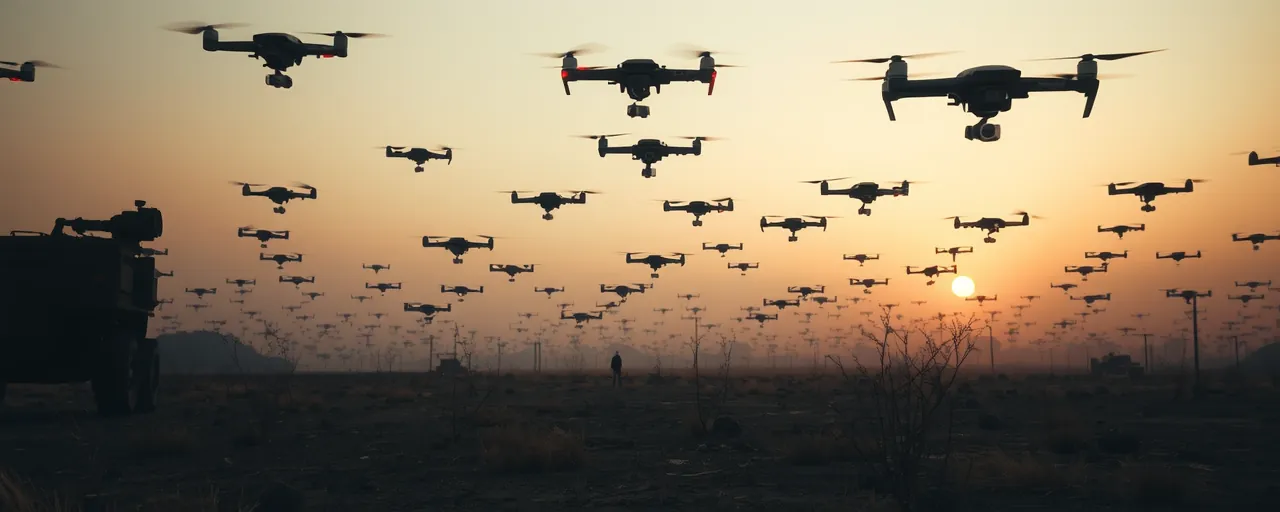Warfare in a New Age
The nature of war is changing at breakneck speed. During a recent discussion in New York, top military leaders shared how the U.S. armed forces are adapting to a landscape driven by drones, artificial intelligence, and relentless global threats. Gen. Randy George, Army chief of staff, captured the urgency, noting that battlefields evolve as fast as everyday technology. With drones exposing every move, traditional tactics are obsolete, and the military must innovate to stay effective.
Unmanned systems have redefined conflict. From low-cost drones swarming Ukrainian skies to advanced platforms scanning from 60,000 feet, these tools dominate modern warfare. George highlighted how their presence eliminates the ability to hide, forcing troops to rethink movement and strategy. This shift demands not just new equipment but a new mindset, one that embraces agility and rapid response to stay ahead of adversaries.
Ideas From the Front Lines
To meet these challenges, the Army is turning to its own ranks. Through a strategy known as 'transforming and contact,' leaders are seeking input from junior soldiers, who often bring fresh perspectives on technology. Gen. George praised their innovative spirit, noting that ideas from the ground up are shaping how drones and systems are used. This approach feels practical, harnessing the energy of those closest to the action to drive meaningful change.
Structural shifts are also underway. The Army is streamlining headquarters to reduce red tape and prioritizing investments in mobile brigade combat teams. These units are built for speed and precision, designed to operate in fluid, high-stakes environments. By focusing on flexibility and soldier-driven innovation, the Army aims to create a force ready for whatever threats emerge next.
Blending Manned and Unmanned Forces
The Navy and Air Force are charting similar paths. Adm. James Kilby, acting chief of naval operations, described plans for a hybrid fleet, combining traditional ships with unmanned vessels and aerial systems. Shipbuilding delays have frustrated efforts to expand the fleet, but unmanned options offer a faster, cheaper way to boost capacity. Kilby emphasized the need for experimentation, integrating these systems into strike groups that can operate seamlessly together.
Gen. David Allvin, Air Force chief of staff, outlined a parallel effort. The Air Force is pairing unmanned aircraft, such as the YFQ-42A and YFQ-44A, with piloted planes to maximize efficiency. This human-machine collaboration allows machines to take on dangerous tasks while humans retain control. To fund these advancements, the Air Force is cutting excess infrastructure, redirecting resources to priorities that enhance combat readiness.
Safeguarding the Nation
Homeland defense is undergoing a major overhaul. Gen. B. Chance Saltzman, Space Force chief, warned that threats to U.S. soil are growing, driven by advanced weapons and cyberattacks. The Space Force is developing the Golden Dome, a layered system to protect the nation from missiles and other dangers. Saltzman argued that its high cost is justified by the need to secure American communities, reflecting a shift toward prioritizing domestic resilience.
The Coast Guard is also stepping up. Adm. Kevin Lunday underscored the strategic importance of the Arctic, where icebreakers and cutters are essential for defense. Building these vessels is a slow process, highlighting a broader challenge across the services: aligning resources with ambitious goals. This tension between needs and budgets affects not just the military but the nation’s broader security priorities.
Ethics in the Race to Modernize
As technology races forward, ethical considerations are front and center. Those advocating for responsible innovation stress the importance of human oversight, particularly for AI and nuclear systems. The 2025 defense budget includes significant funding for research, with allocations for historically Black colleges and universities to diversify tech development. This approach seeks to balance cutting-edge advancements with adherence to human rights and international norms, a priority for those focused on global stability.
Others argue that speed is critical. With adversaries deploying autonomous drones and advanced missiles, any delay could weaken U.S. defenses. This debate is playing out in Congress, where lawmakers balance military needs with domestic priorities like healthcare and infrastructure. The upcoming 2026 defense review will likely sharpen these discussions, as leaders navigate the complex interplay of innovation, ethics, and funding.
A Path Forward
The U.S. military is at a pivotal moment. The rise of drones, AI, and new threats demands unprecedented adaptability. From the Army’s soldier-driven strategies to the Navy’s hybrid fleets, each service is forging its own way, united by a commitment to stay ahead. Initiatives like the Golden Dome and Arctic defenses highlight a focus on protecting both troops and the homeland, addressing risks that feel closer than ever.
Challenges persist, from delayed shipbuilding to strained supply chains and tight budgets. Yet leaders are leaning on innovation—both technological and human—to overcome these hurdles. Soldiers proposing drone tactics, engineers designing unmanned systems, and planners rethinking defense strategies all point to a resilient spirit. This drive to adapt reflects a broader determination to meet the moment, no matter the obstacles.
The world is watching as these changes unfold. Decisions made now will shape the military’s future and influence global security. For Americans, the stakes are clear: a stronger defense, a safer homeland, and a force striving to keep pace with a turbulent world. The path is complex, but the military’s commitment to evolve offers hope for a secure future.
